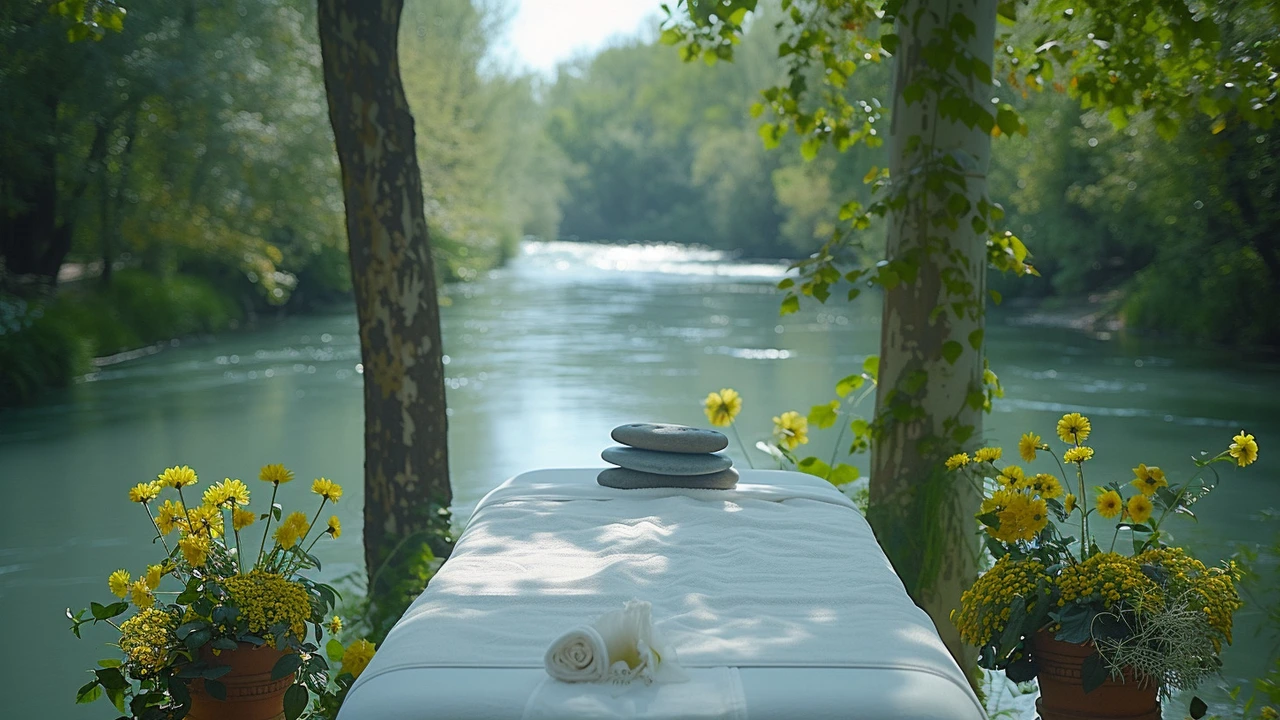Stone Therapy for Dogs: Safe Hot and Cold Stone Massage Tips
Stone therapy uses warmed or cooled stones to help relax muscles and improve circulation. For dogs, the goal is gentle warmth, calm, and comfort - not deep heat or long sessions. Many owners see relaxed breathing, softer muscles, and easier movement after short, careful sessions.
How stone therapy works
Heated stones transfer mild warmth into the skin and superficial muscles. That warmth can ease tightness and help a nervous dog settle. Cold stones offer the opposite: they reduce surface inflammation and numb tender spots for brief relief. Both tools support massage techniques but should never replace veterinary care for injuries or serious pain.
Is stone therapy safe for my dog?
Yes, if you follow a few rules. Always check with your vet first, especially for puppies, seniors, pregnant dogs, or pets with heart or nerve conditions. Test stone temperature on your wrist before touching your dog - it should feel comfortably warm, not hot. Keep stone sessions short, around five to ten minutes, and watch your dog closely for signs of discomfort or overheating.
How to try stone therapy at home
Start slow. Use smooth, nonporous stones you can warm in hot water or cool in a sealed bag in the fridge. Wrap stones in a thin towel so the heat is gentle on skin and fur. Let your dog sniff the stones and choose when to come closer. Work on calm, flat areas like the shoulders, back, and hips, using light pressure and slow strokes. Pair stones with soft petting and short breaks.
Tips for success
Keep sessions brief. Short, consistent sessions beat long, rare ones. Choose the right temperature. Warm should feel soothing, cold should be mildly cool. Watch body language. Relaxed eyelids, slow tail wags, and soft breathing mean the dog is happy. Tucked tail, stiff body, panting, or trying to move away mean stop. Avoid open wounds, inflamed spots, or recent surgical sites. Don’t substitute stones for vet treatment. Use them as a comfort tool alongside proper medical care.
When to skip stone therapy
If your dog has unmanaged pain, fever, skin infections, or circulation problems, skip stone work until a vet gives the go-ahead. Also avoid if your dog is very anxious or distrustful after a few tries.
Finding a pro
A certified canine massage therapist experienced with stones is ideal. Ask about training, client references, and how they monitor temperature and dog comfort during sessions.
Quick checklist: vet approval, test stone temp on your wrist, wrap stones in a towel, keep sessions under ten minutes, watch for stress signals, avoid wounds, stop if the dog pulls away. Use cold stones only briefly and never place stones directly on broken skin. Record how your dog responds and share notes with your vet or therapist regularly.
Stone therapy can be a gentle, calming add-on to your dog’s care when done safely. Try short, cautious sessions, get vet approval, and focus on your dog’s comfort above all else.

Demystifying Stone Therapy: What it is and How it Works
Hi there! In today's post, we're going to unlock the mysteries of stone therapy - a powerful alternative medicine practice that's been gaining a ton of traction recently. We'll explore what stone therapy is, how it works, and why it's becoming so popular in the wellness community. From the impact of different stones to understanding the energy they can bring, we're diving deep into the world of holistic healing. Stay tuned!

Stone Therapy: A Holistic Approach to Health and Wellness
Hi there! This post shares insightful knowledge about the holistic approach of Stone Therapy towards health and wellness. Leaning on the wisdom of natural elements, this entry delves into how these stones can promote balance and healing. From the science behind it, to different methods of use, this article serves as a comprehensive guide to enhancing well-being through stone therapy. So, if you're looking for fresh, exciting ways to boost your health journey, stick around and let's explore this together!

Fire Massage: A Burning Trend in Alternative Therapy
Sep, 12 2023

Mindfulness for Beginners: Getting Started with Ease
Sep, 27 2024


